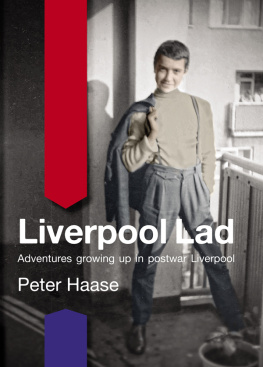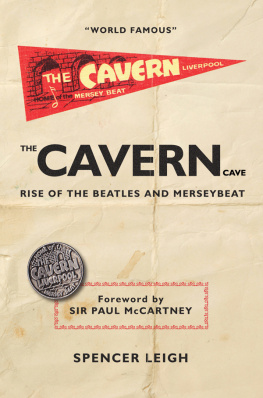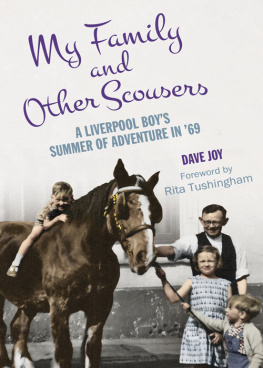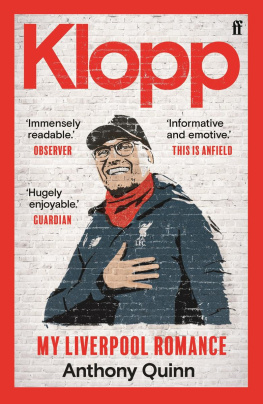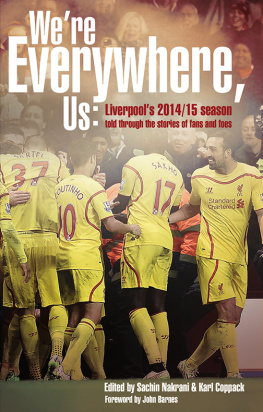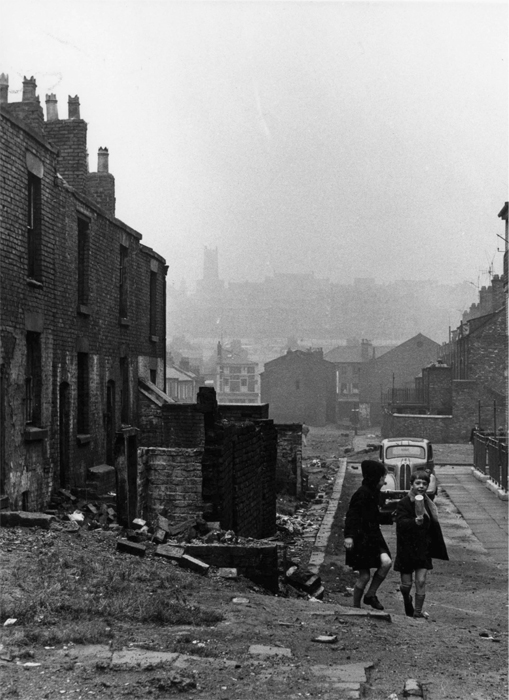
Liverpool Lad
Liverpool Lad
Adventures growing up in postwar Liverpool
Peter Haase

Mother Tongue Publishing Limited
Salt Spring Island, BC
Canada
MOTHER TONGUE PUBLISHING LIMITED
290 Fulford-Ganges Road, Salt Spring Island, B.C. V8K 2K6 Canada
www.mothertonguepublishing.com
Represented in North America by Heritage Group Distribution.
Copyright 2016 Peter Haase All Rights Reserved. The use of any part of this publication reproduced, transmitted in any form or by any means, electronic, mechanical, photocopying, recording or otherwise, or stored in a retrieval system, without the prior written consent of the publisheror, in case of photocopying or other reprographic copying, a licence from Access Copyright, the Canadian Copyright Licensing Agency, is an infringement of the copyright law.
Book Design by Mark Hand
Back cover photo: Hodder Street, rear, 1968, Liverpool Record Office, Liverpool Libraries
Endpages: Bostock Street and Kew Street, 1966, Photography by Harry Ainscough, Liverpool
Record Office, Liverpool Libraries
Dedication page: Three Graces on the Liverpool waterfront in 1920. Royal Liver Building, the
Cunard Building, and the Port of Liverpool Building
p. 13, 50 courtesy of Liverpool Record Office, Liverpool Libraries
p. 116 courtesy of Streets of Liverpool, Liverpool City Group
p. 166 courtesy of Trinity Mirror
p. 278 courtesy of Australian National Maritime Museum, Samuel J Hood Studio
All efforts have been made to locate copyright holders of source material wherever possible.
Printed on Enviro Antique Natural, 100% recycled
Printed and bound in Canada.
Mother Tongue Publishing gratefully acknowledges the assistance of the Province of British Columbia through the B.C. Arts Council and we acknowledge the support of the Canada Council for the Arts, which last year invested $157 million in writing and publishing throughout Canada. Nous remercions de son soutien le Conseil des Arts du Canada, qui a investi 157$ millions de dollars lan dernier dans les lettres et ldition travers le Canada.
LIBRARY AND ARCHIVES CANADA CATALOGUING IN PUBLICATION
Haase, Peter, author
Liverpool lad: adventures growing up in postwar Liverpool / Peter Haase.
ISBN 978-1-896949-29-1 (paperback)
ISBN EPUB 978-1-896949-58-1
Haase, Peter--Childhood and youth. 2. Liverpool (England)--Biography. I. Title.
DA690.L8H32 2016942.7530823092C2016-900245

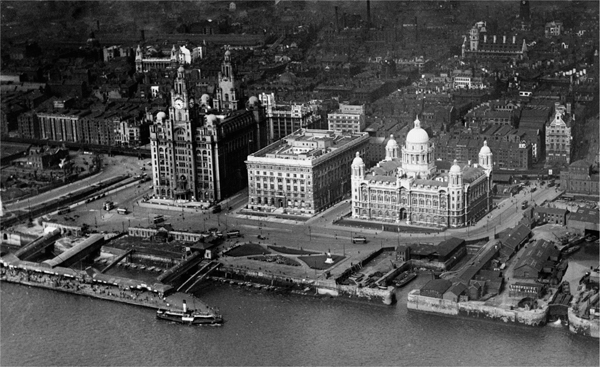
With love
To Mona, and our son and daughter, Paris and Sophia, and to my brothers, Fred, Dave and Geoff, three more Liverpool Lads.
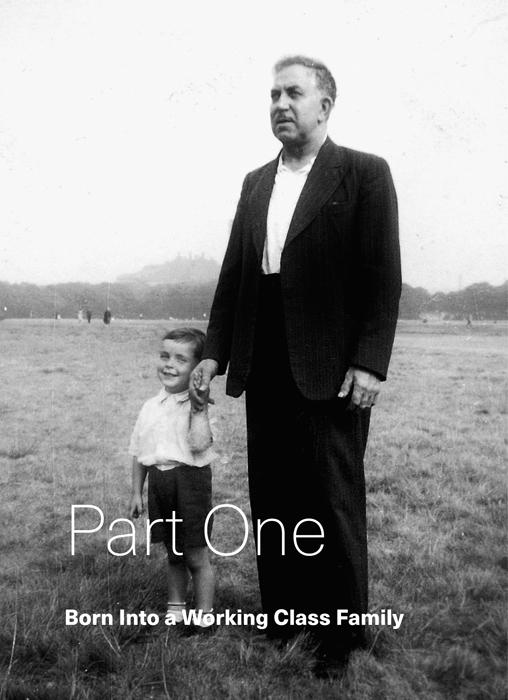
26 Cadmus Street, Everton
I was born at home, in 1950, in the same big bed where my three older brothers were brought into the world. My mother had four boys in five years. The house was a run-down tenement, built in the early 1800s, and I grew up there, in that famous inner-city working-class district of Everton, Liverpool 6 until I was eleven.
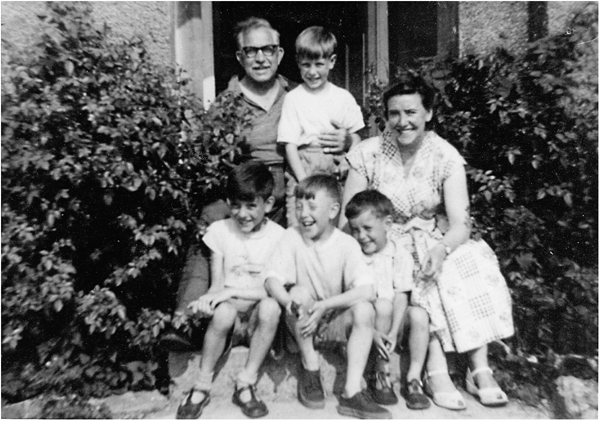
The Family: Back row, Albert, Dave, Mary, Front row, Fred, Geoff, Peter, Rhyl, Wales, 1954
Opposite: Me and dad, Newsham Park, 1952
Everton was a historic open-door community, full of derelict and bombed-out homes, and a warren-like maze of hundreds of intertwined, wall-to-wall tenement houses on narrow streets and back alleys. The official name given for the old alleyways was back entry. We called them jiggers. We had a nickname for everything and everyone.
A typical row of attached houses presented a front door and a window, and then another twelve feet along was another front door and a window. These doors had a letterbox, street numbers and a big doorknob, all sold brass, which we kept polished nicely with Brasso, to keep the place up to scratch.
Every dwelling on the street had four roomstwo bedrooms up and two rooms down with an outdoor flushing lavvo (that looked like an outhouse) next to the coal shed in the tiny backyard. The front room, which opened right onto the street without a hallway, we called the kitchen (we didnt say living room). Beyond that was the back kitchen, where we had the old gas stove and the kitchen sink that had only a cold-water tap. To get hot water for any purposesuch as washing your hands and face, filling up the galvanized bathtub that hung on a nail on the backyard wall or doing the dishesrequired boiling enough water in the kettle and pots to do the job. The freezing cold water took ages to boil for a decent pot of tea, and as they always said, A watched kettle never boils. You always had to heat the teapot before making tea, because everything was cold to the touch for most of the year. There were only fourteen houses down both sides of the narrow street, and we lived at number 26, the second to the end. The street was only slightly illuminated at night with a handful of gaslights. I remember when a man would come to turn the lights on with a small flame on the end of a long pole if the automatic switching failed.
Our short cobblestone street was dead-ended with a six-foot redbrick wall that connected the two end houses. We kids would call out to a small dog called Trigger who lived at the end of the street, and as he came chasing and barking after us, wed jump up on top of the brick wall, being careful not to fall over into the jigger (that particular alleyway had a fall of fifteen feet) because the next street was further down the terraced hill. All of us boys and girls became very deft at climbing up, down and over high walls, using our fingertips where the mortar had fallen out from between the bricks. Alas, not all walls could be negotiated, usually because of the broken glass embedded in cement along the top to keep the intruders and trespassers out. These dangerous walls were everywhere. The hundreds of rows of streets in the old town were designed with simple practicality in mind, hurriedly erected over a century and a half before. There was no elaborate finish, except for the occasional show of detailed patterns of coloured brickwork edging some doors and windows.
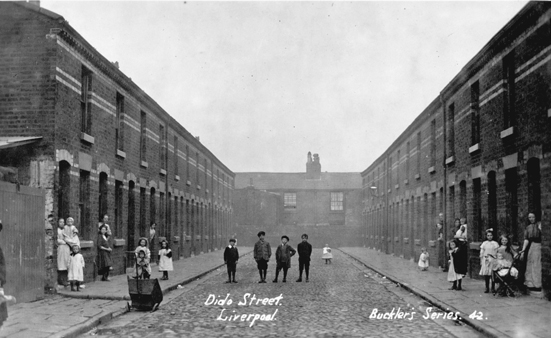
Dido Street, Liverpool, turn of the century. It was one street over from Cadmus and looked just like our street.
Hiding within the confines of those cold connected blocks of human habitat was the ever-present silent observation of economical differences between neighbour and neighbour, family and family. It seems almost expected that people in these tight enclaves, should be nosey and curious about each others private business. This inquisitiveness was alive and well even though we were all basically experiencing similar life struggles. The veil of privacy was thin between the brick walls. One could sit quietly in the front kitchen and clearly hear the neighbours raised voices. I remember my mother hearing a personal comment through the wall, from the lady next door, and answering with Oh aye, I heard that alright! Then there would be a rebuttal from beyond, either a laugh or a reprimand. You could hear the loud talking, the arguments, the radio or TV shows, the laughing, crying, and as some little old ladies could attest, you could catch up on the local gossip without leaving the house. Partial privacy only came later when we were moved from the inner city to the outlying suburb ghettos, where the walls were thicker.
Next page
